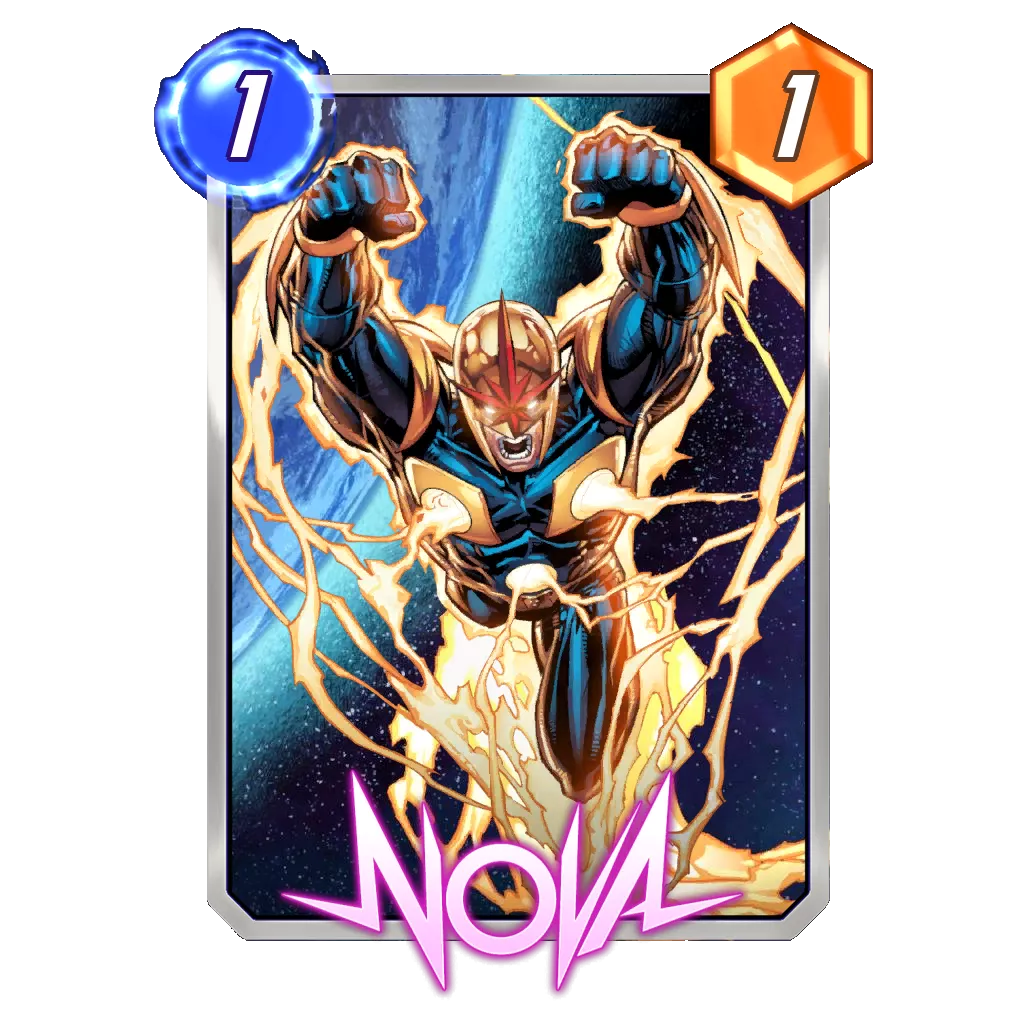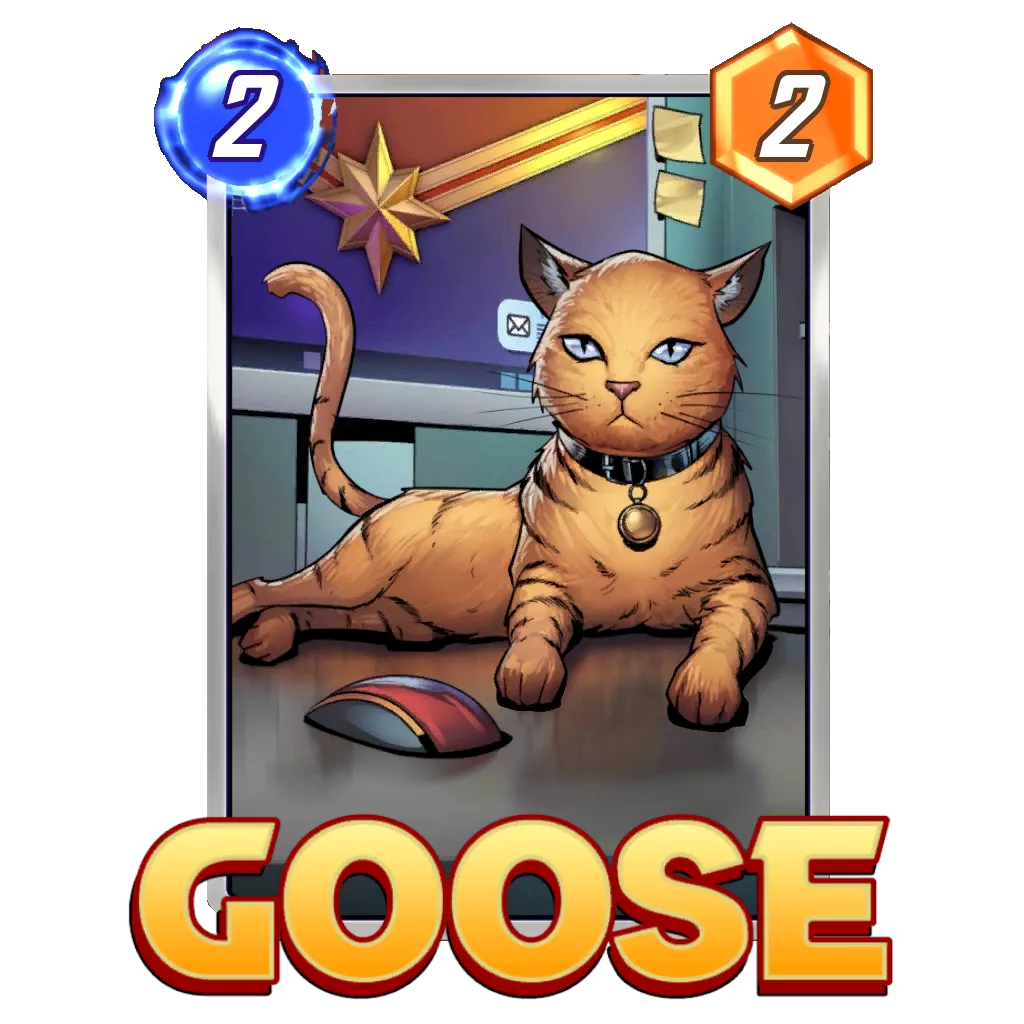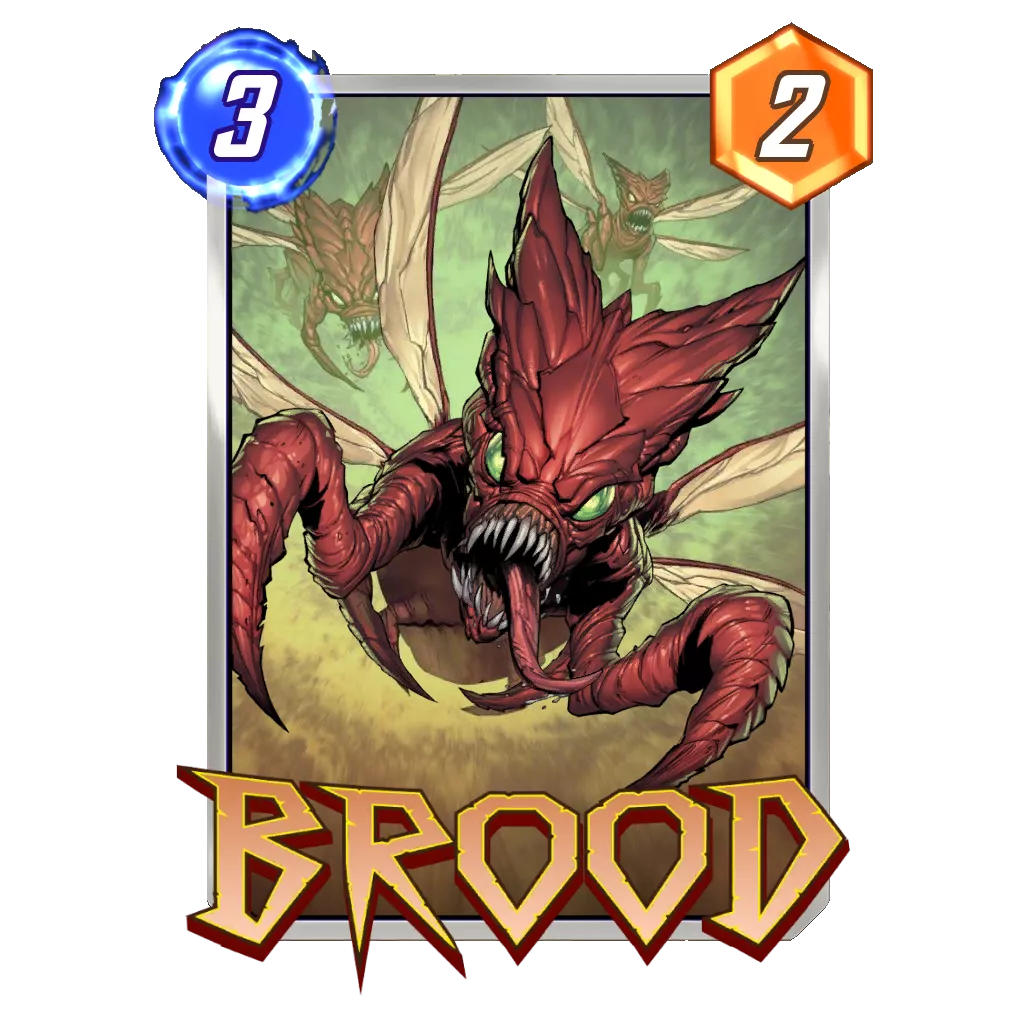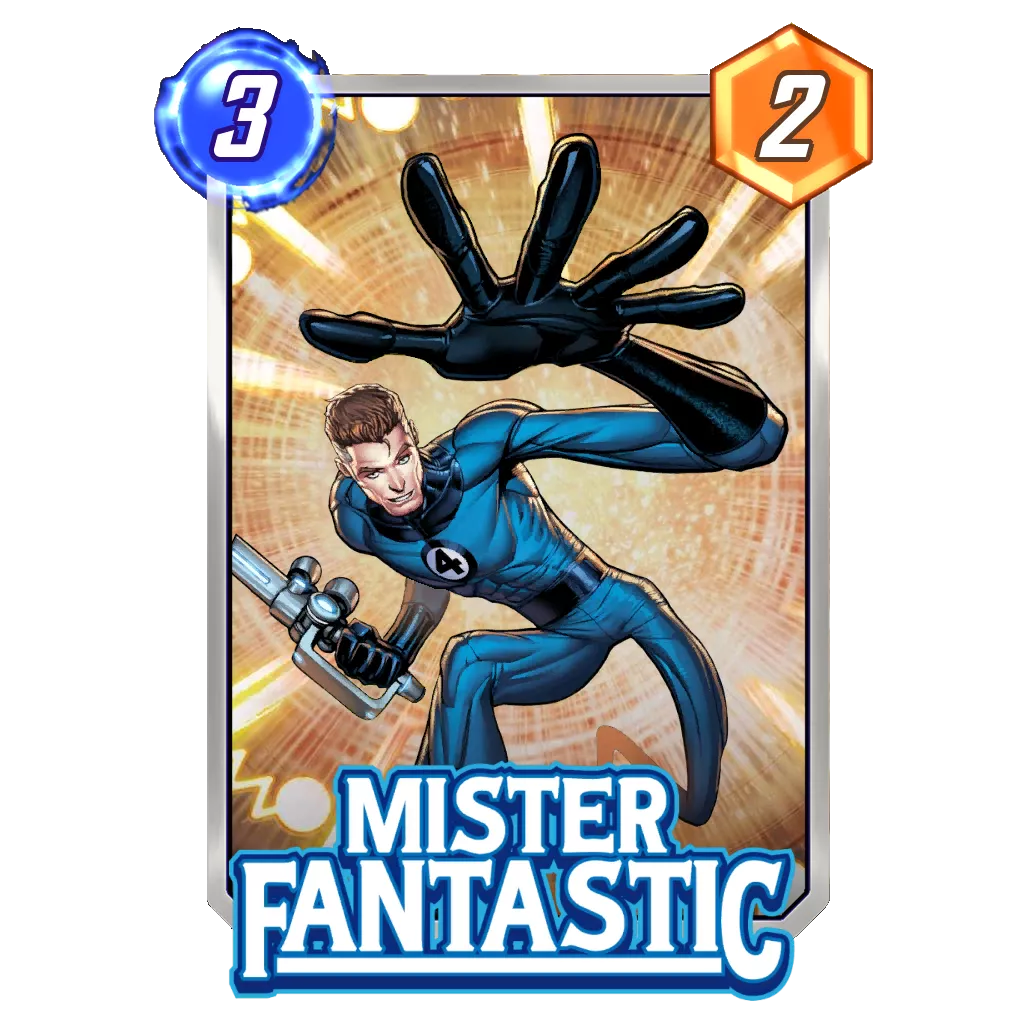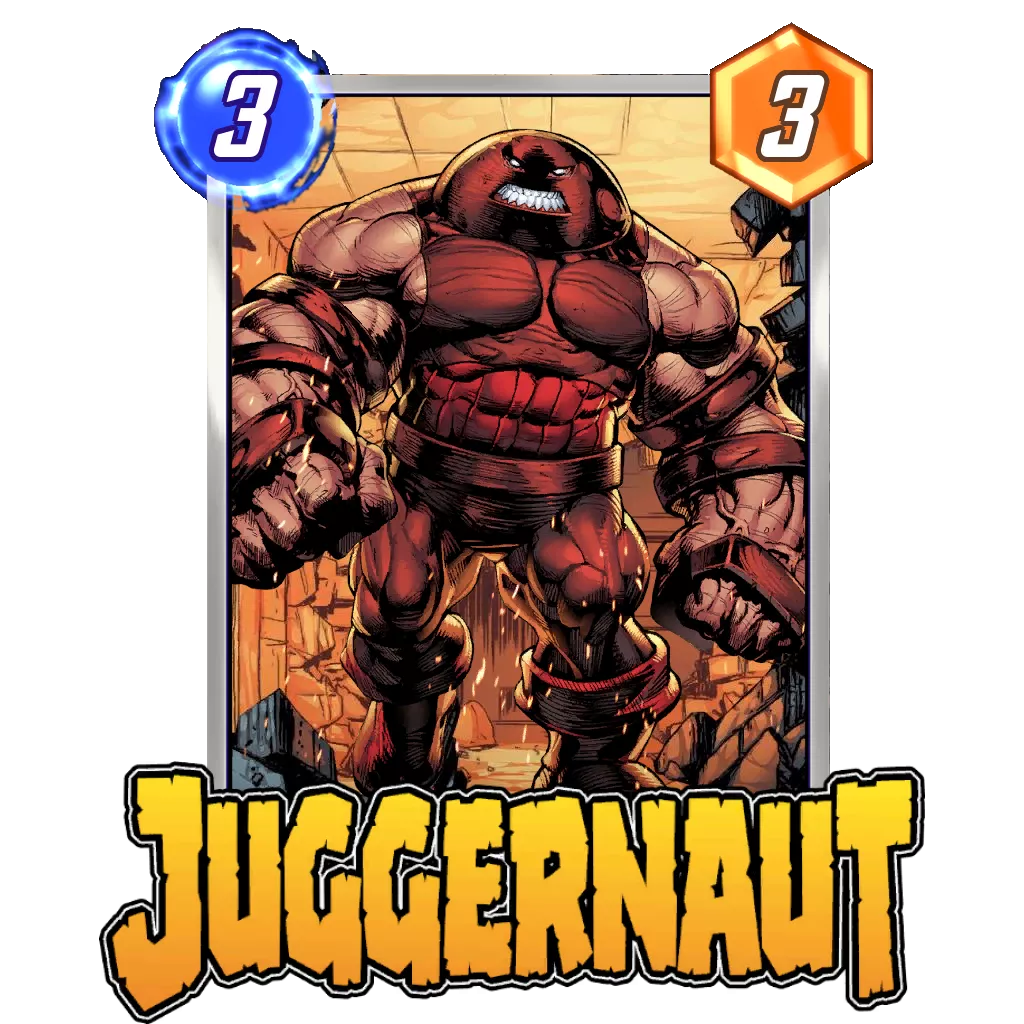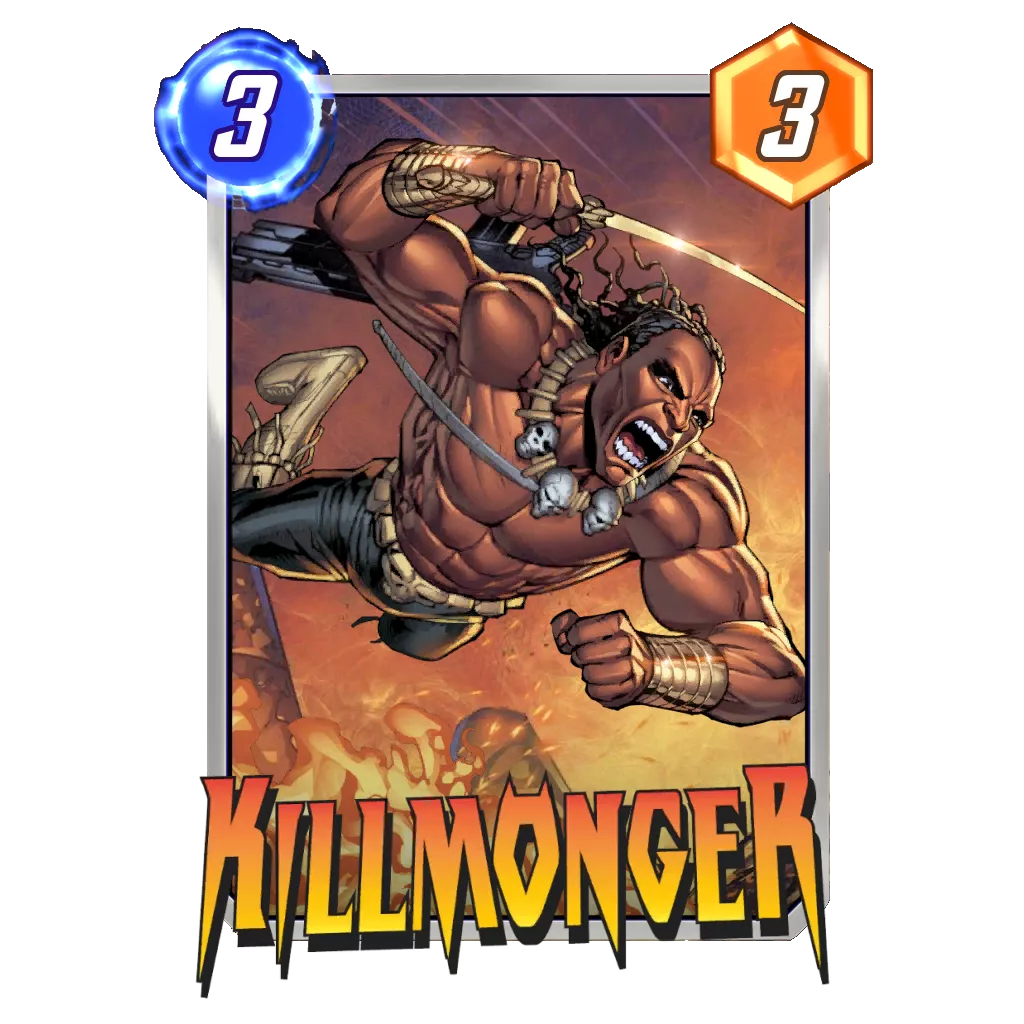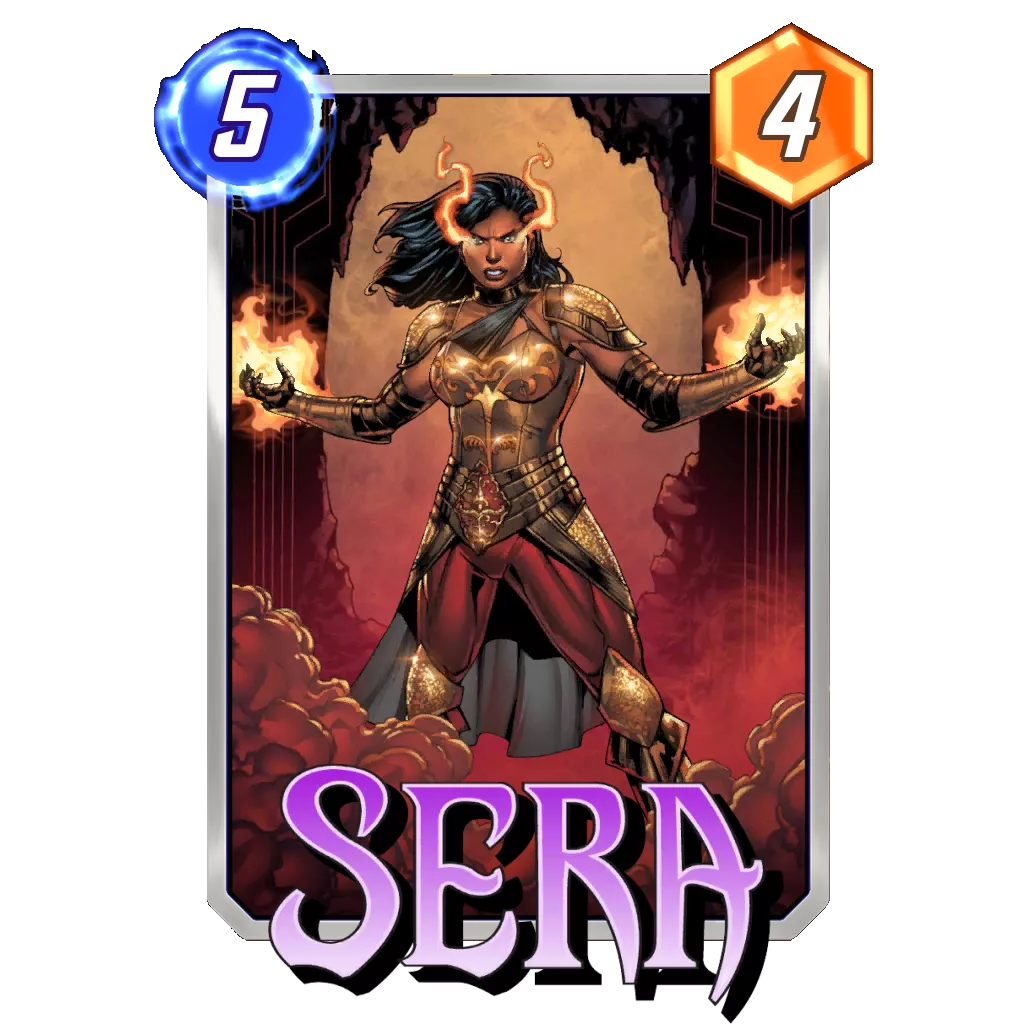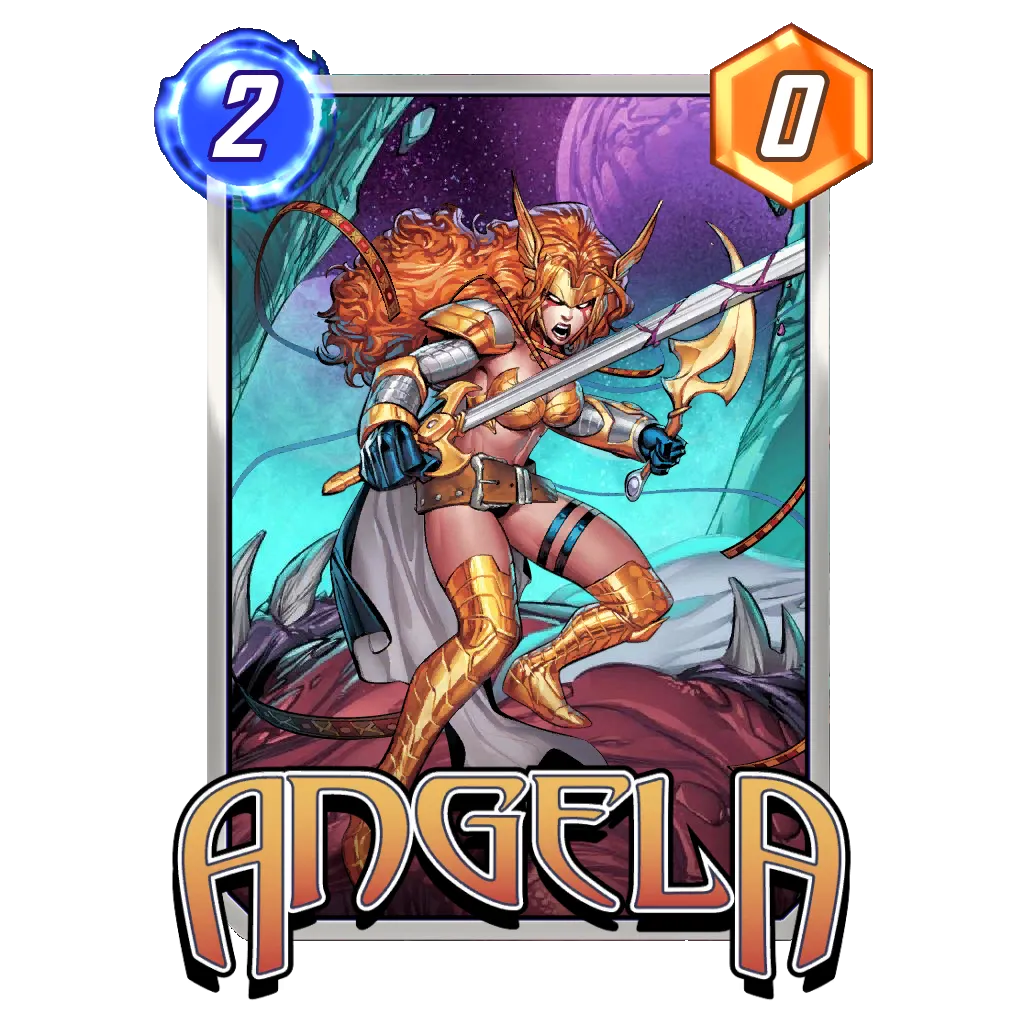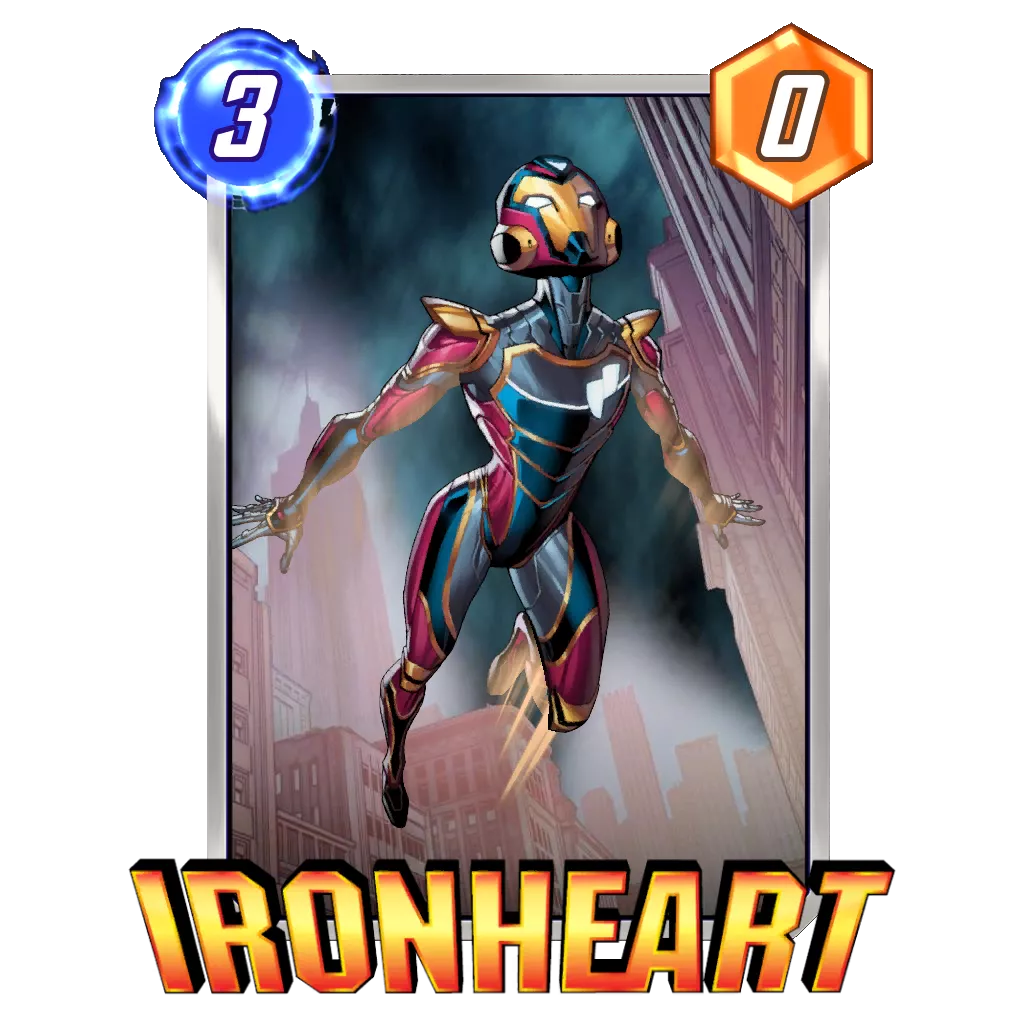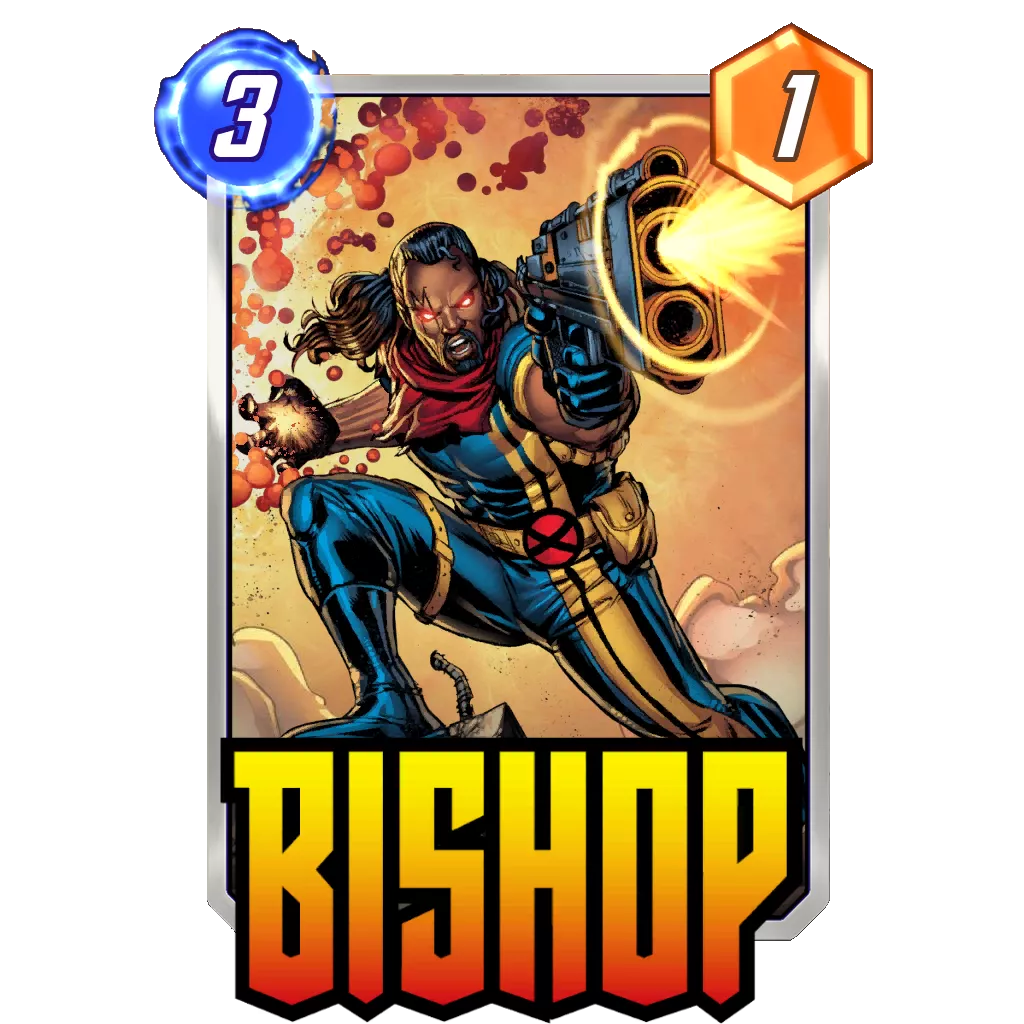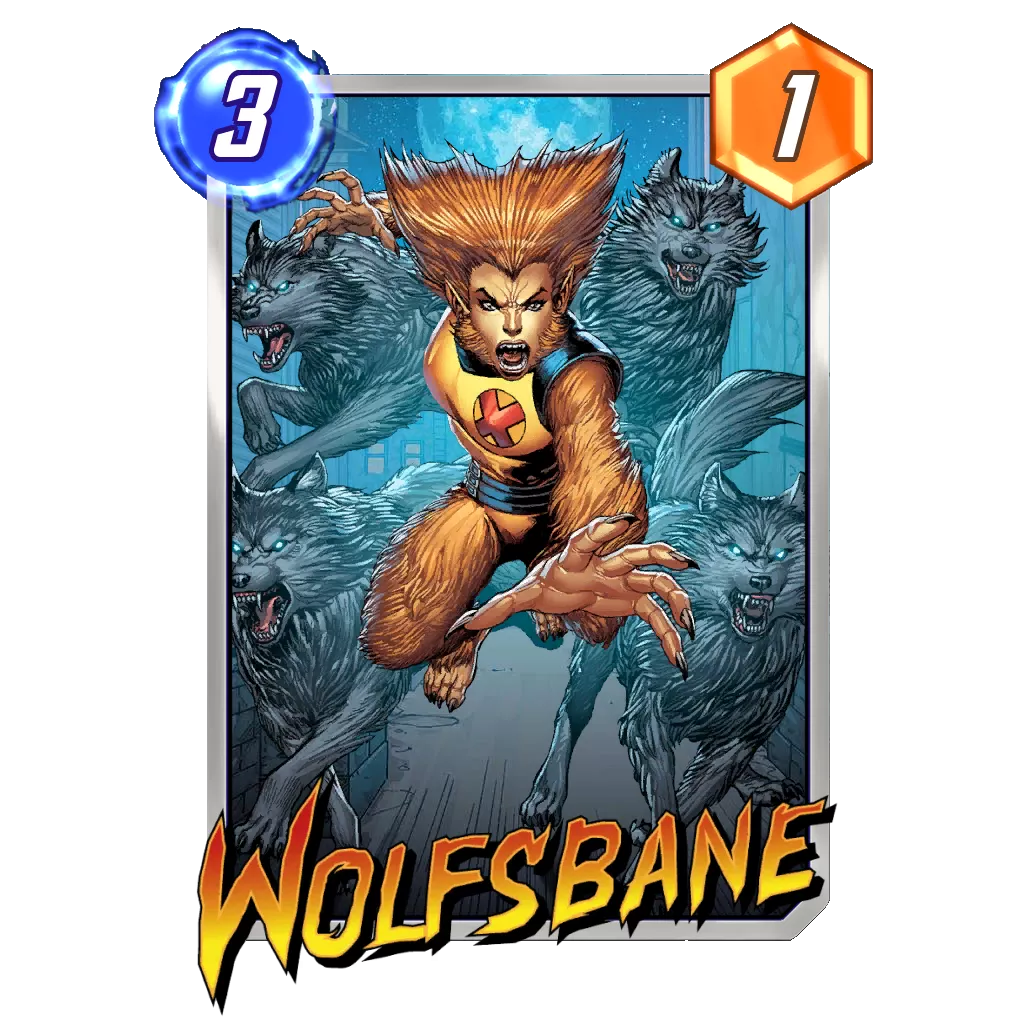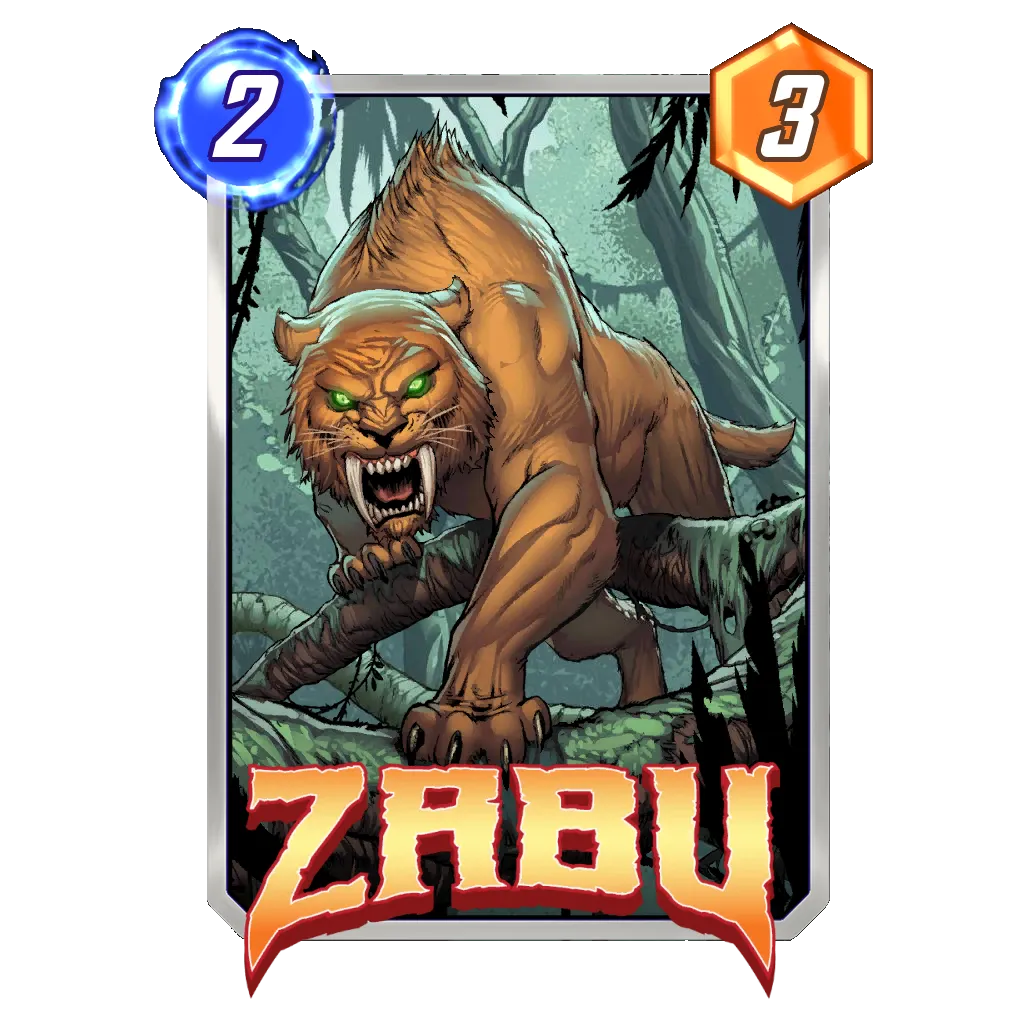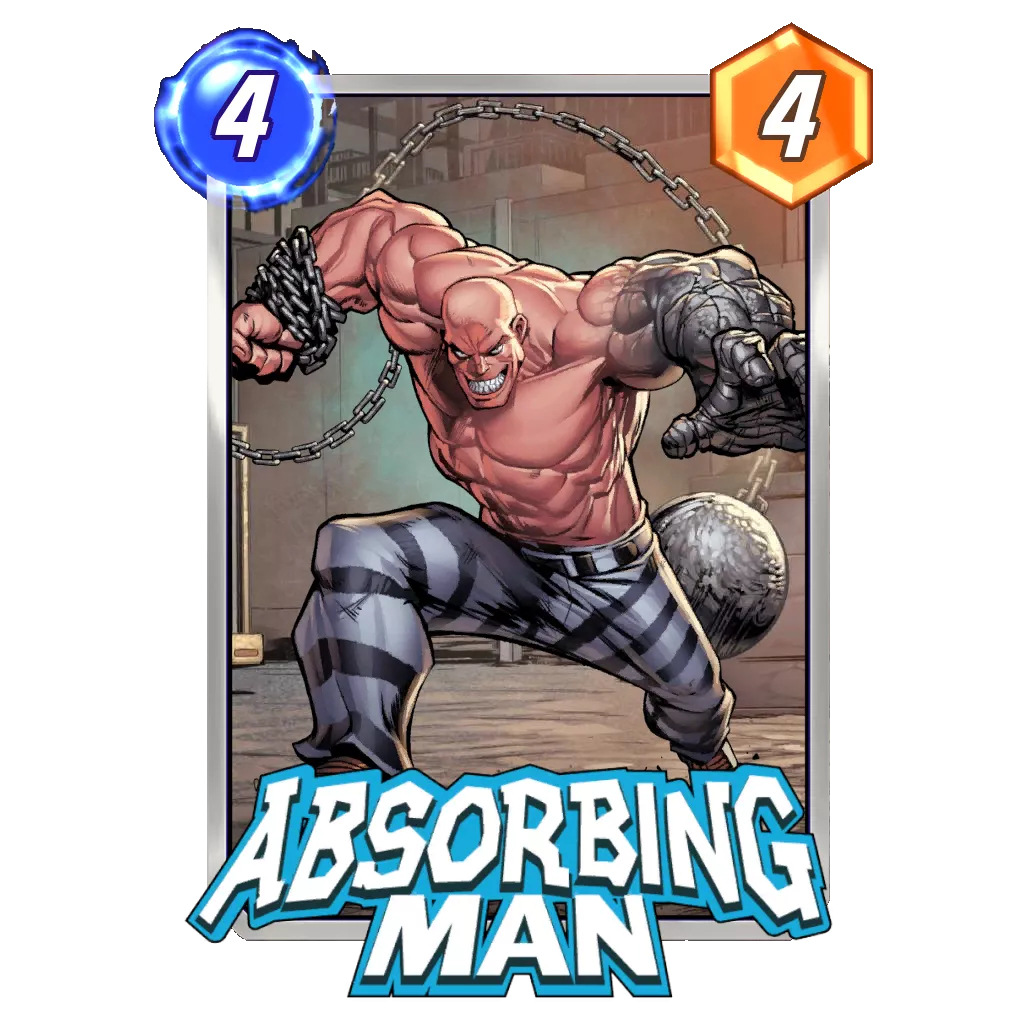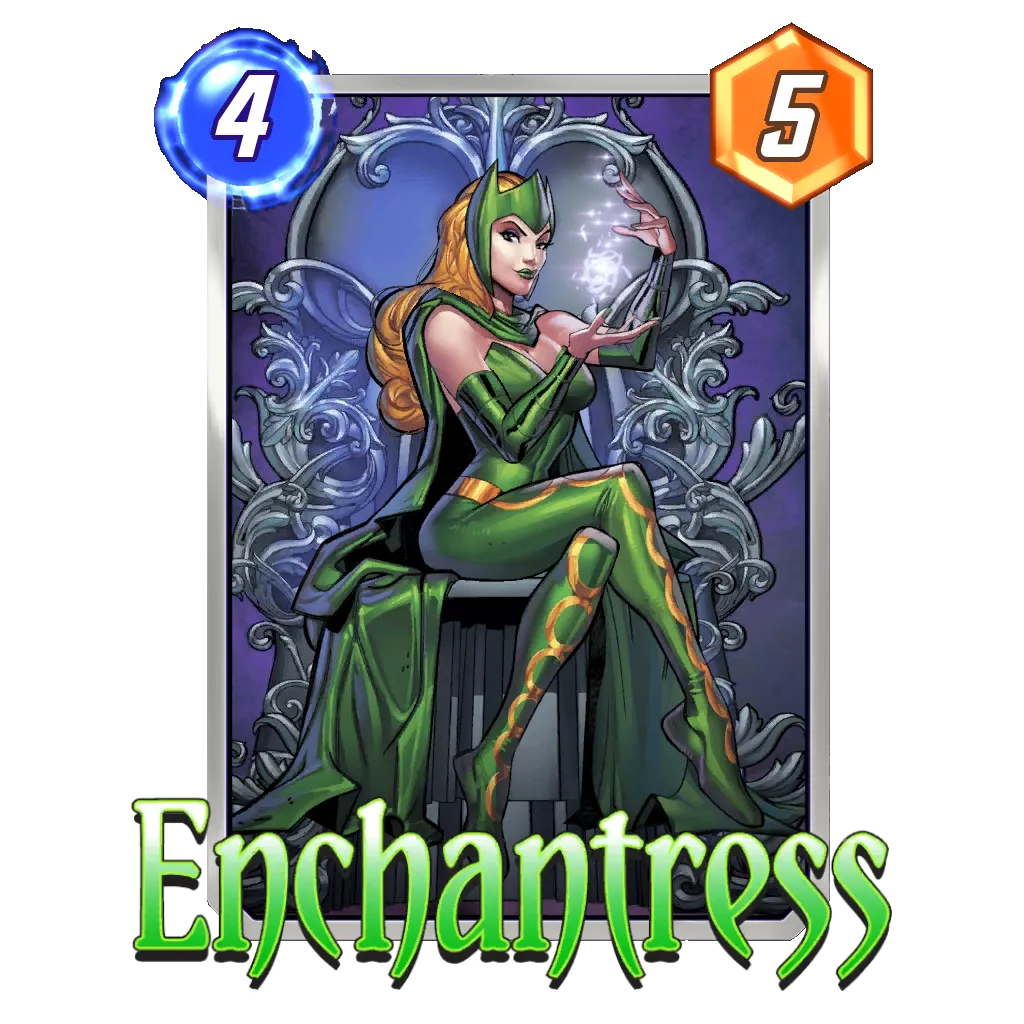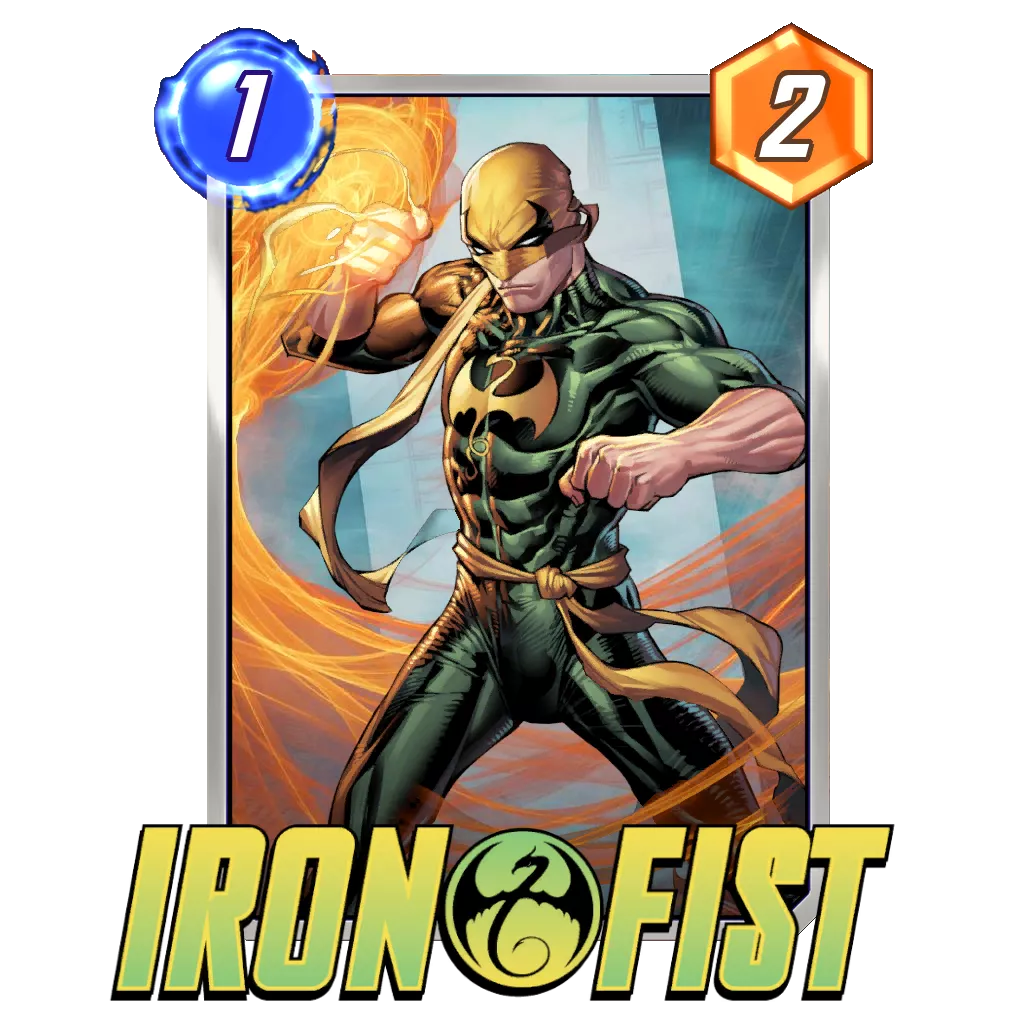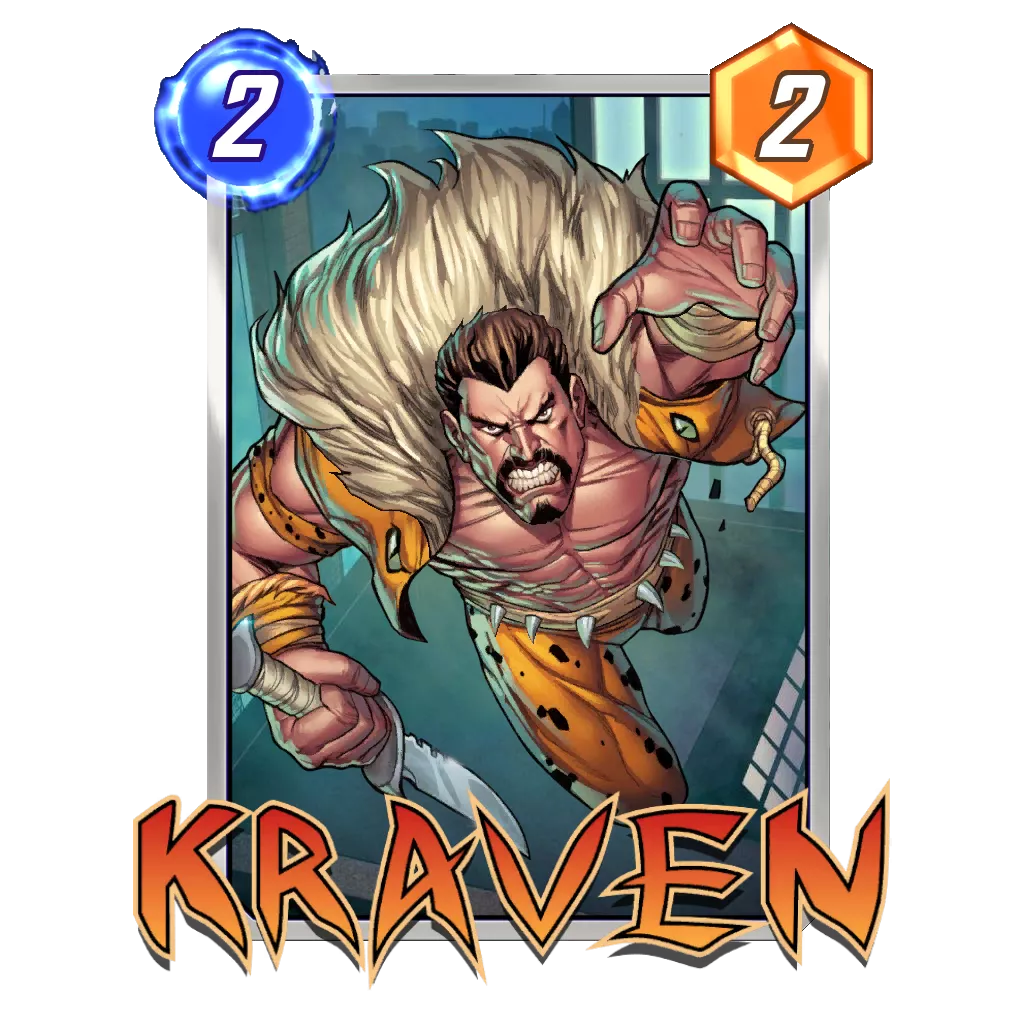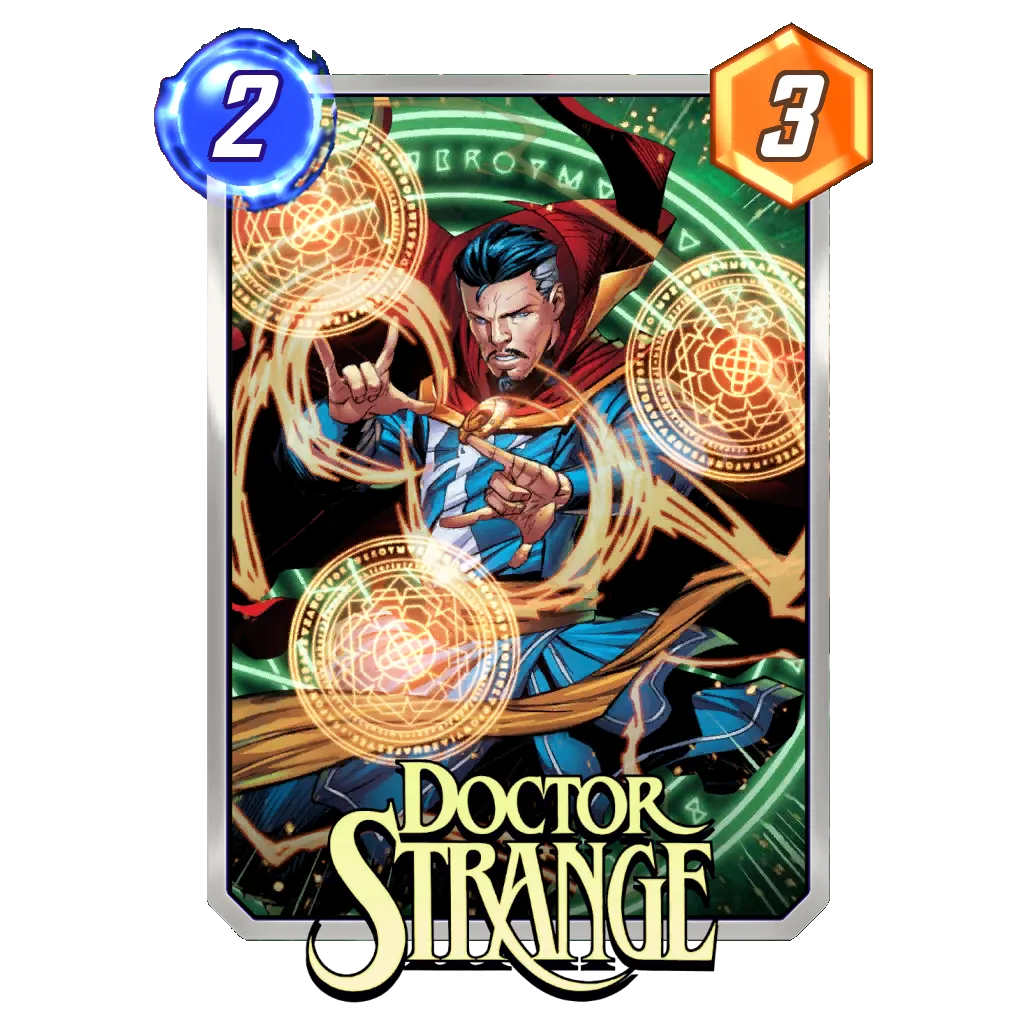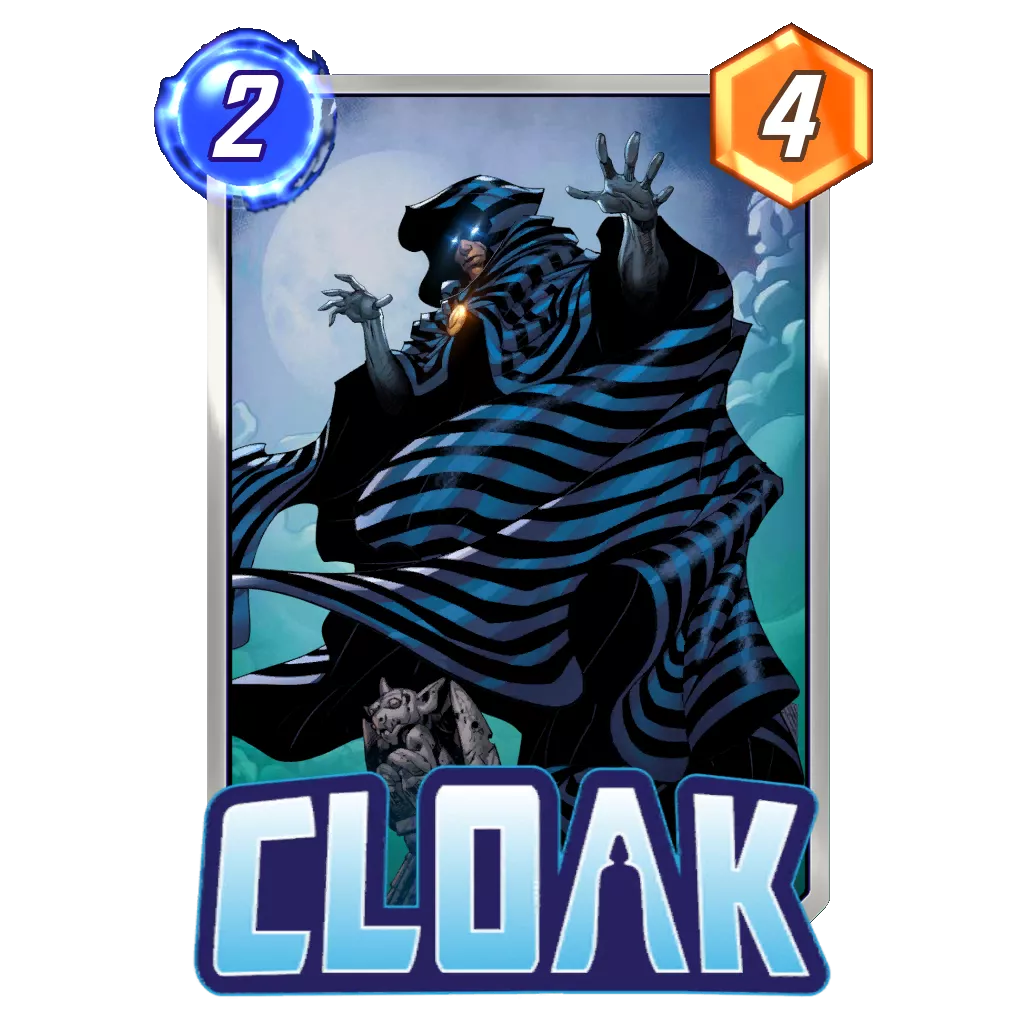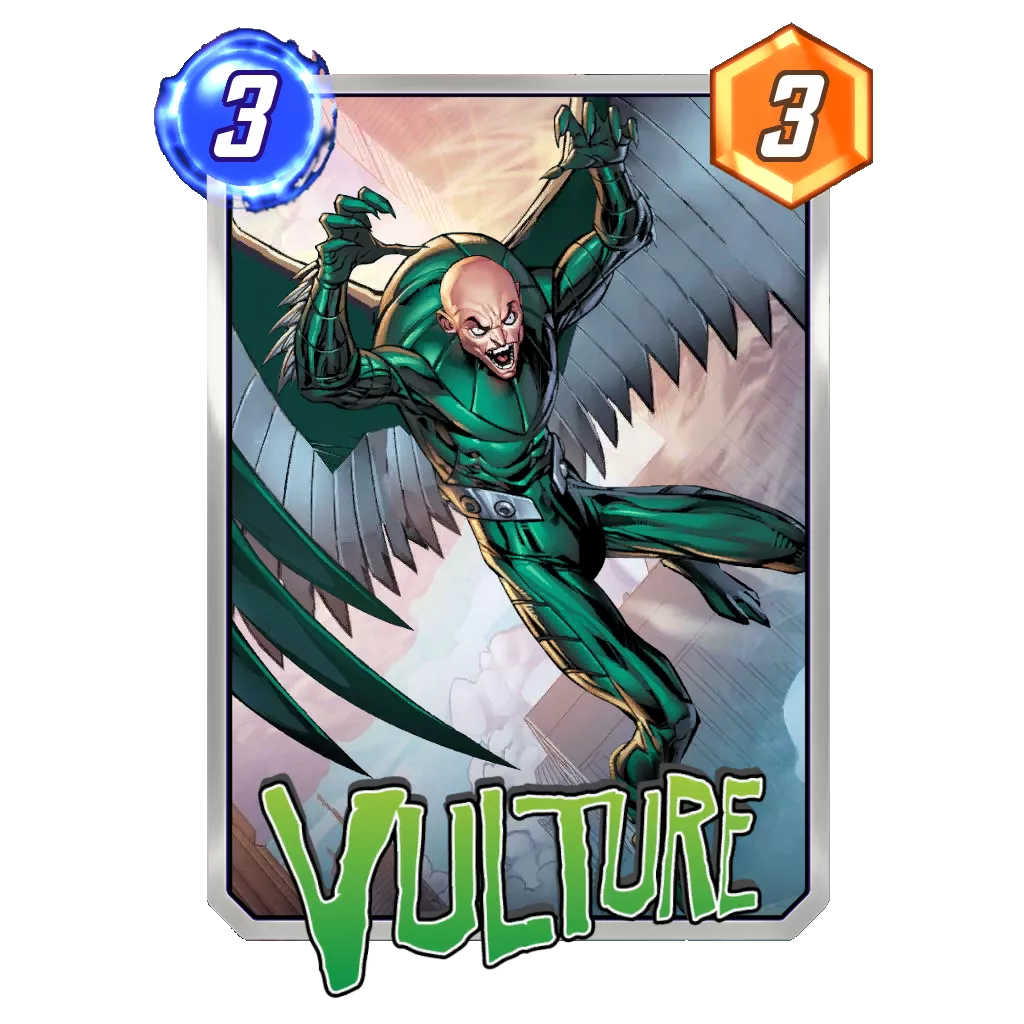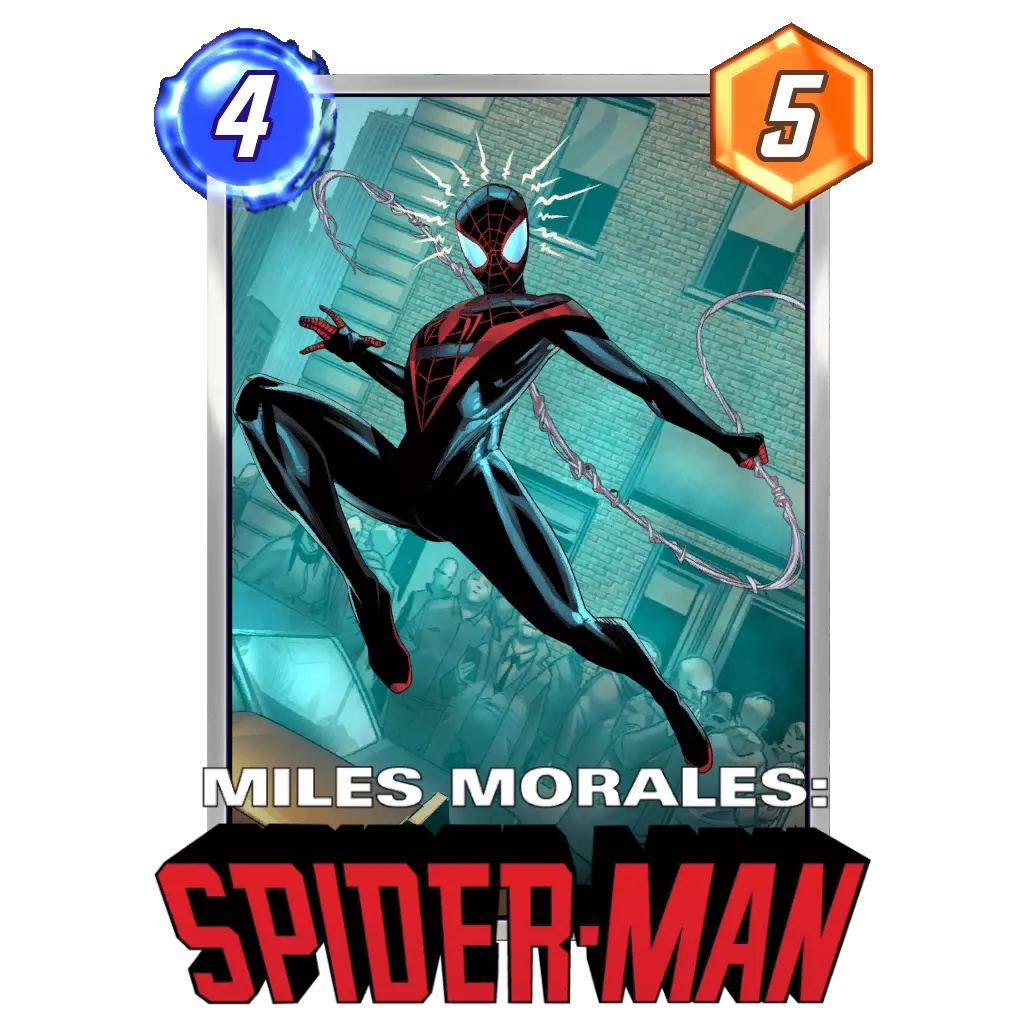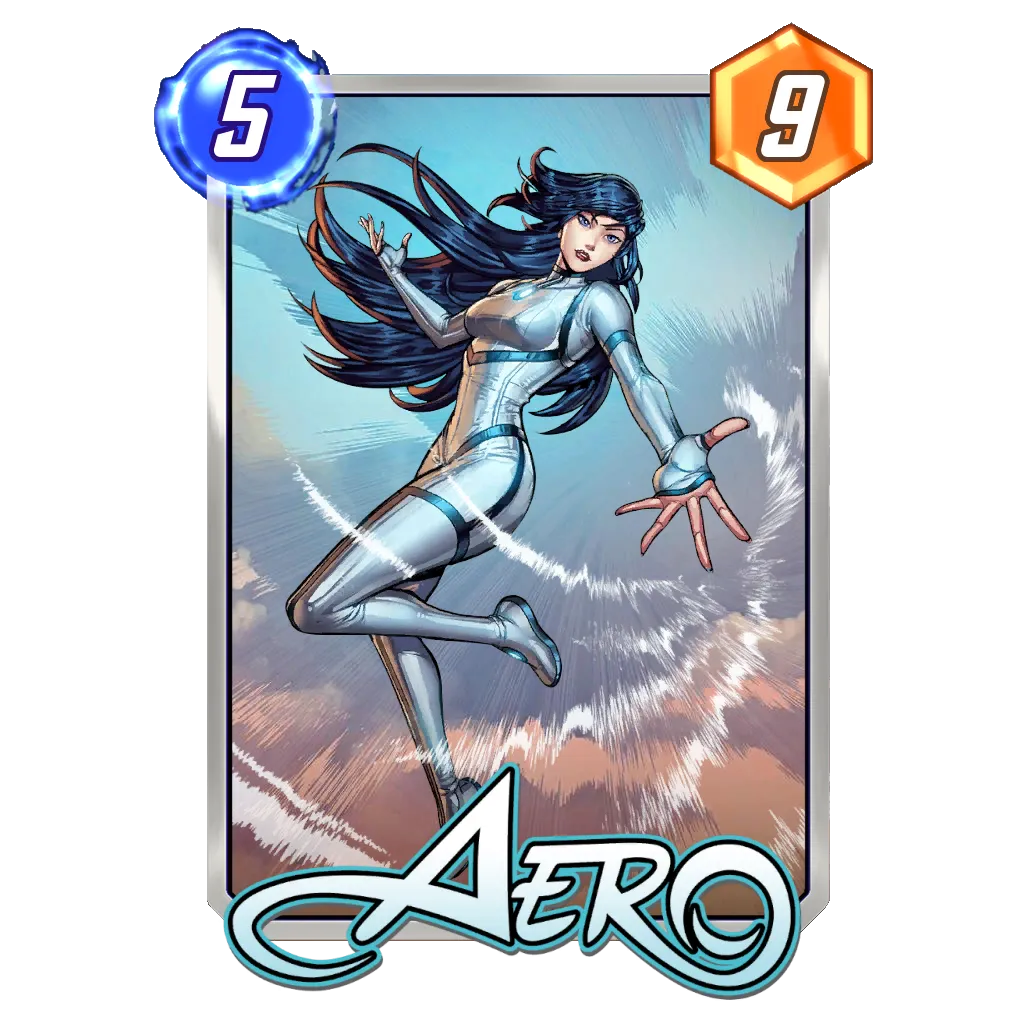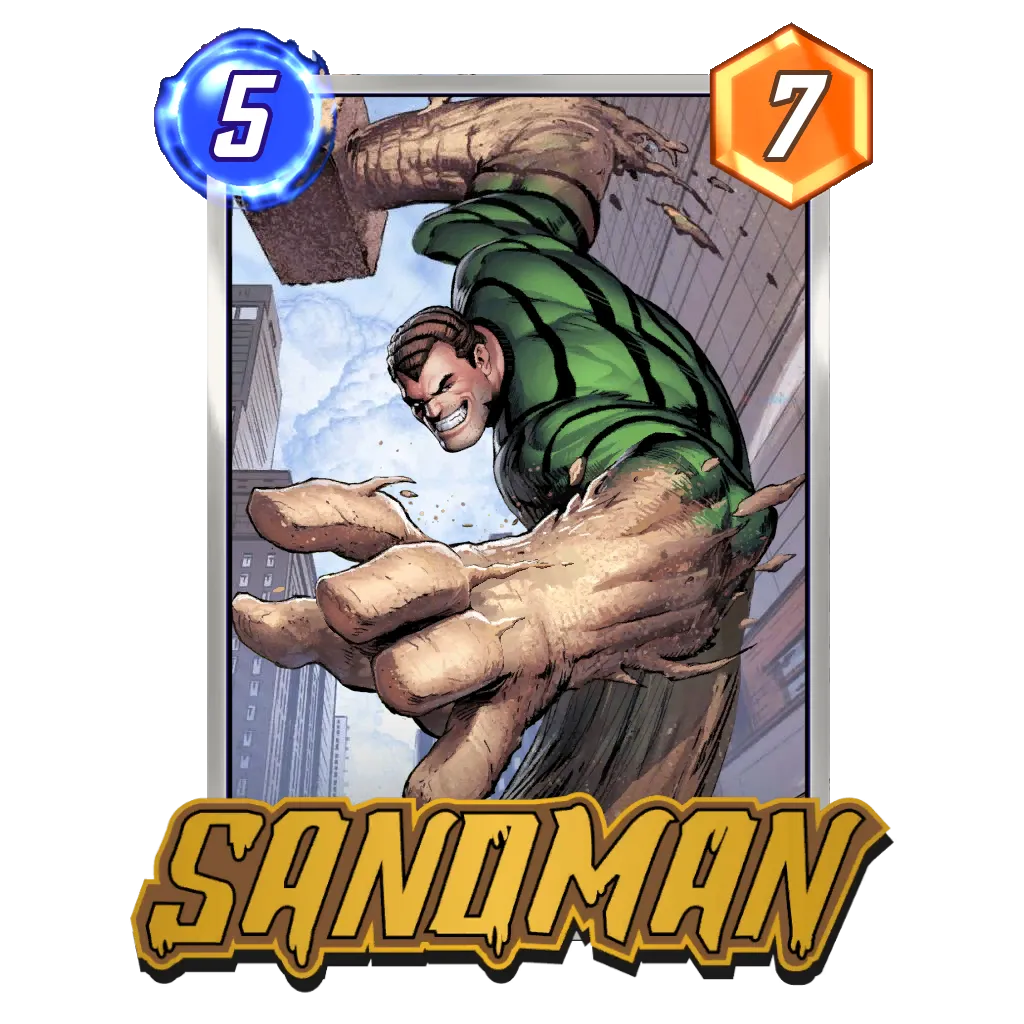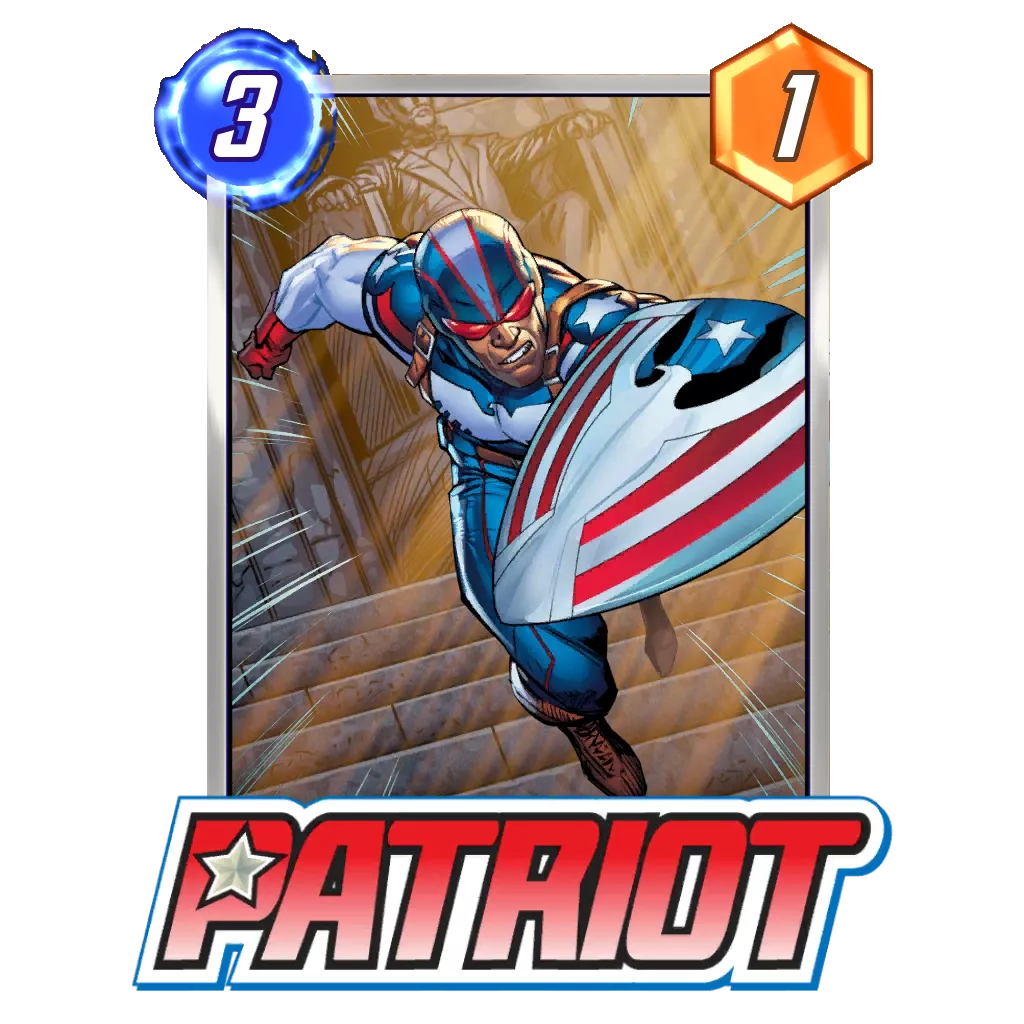Table of Contents
In December 2022, Silver Surfer was a [3/0] and granted +3 power to all the other 3-cost cards on your side of the board. That month, Silver Surfer took the title of the best Season Pass card ever released, as well as the strongest win condition in Marvel Snap. It didn’t last long, though, as Zabu came around the next month to claim both distinctions – until both of them were nerfed in March.
The nerf felt brutal at first, and we barely saw any decks built around the card for more than a month; it almost felt like the [3/2] Silver Surfer was a bad card. To be fair, going from a +3 power bonus to +2 felt like a huge deal. In a deck where you would play almost exclusively 3-cost cards, and typically had 6 to 8 of them on board by game’s end (thank you Brood), Silver Surfer lost five points of value on average with the nerf.
Something we didn’t consider back then was that even with a two power bonus, Silver Surfer can often be considered a 14- or 16-power card on average, rivaling some of the best 6-cost cards in the game. I guess some players must have picked up on this, as Silver Surfer has been a routine top five deck in Marvel Snap for the past two months. Also, it must help to have Sera in the deck, one of the finest combo enablers in the history of Marvel Snap.
Let’s take a look at everything you need to know about the Silver Surfer archetype, and why 3-cost cards are still serious contenders in the Marvel Snap metagame.
Deck Presentation
Deck Concept and Strategy
The deck follows a pretty simple play pattern that culminates into an explosive Turn 6 – and hopefully catches the opponent off guard.
On Turns 2, 3, and 4, you will usually just play a card, focus on spending your energy efficiently, and advance your game plan. Apart from the Storm–Juggernaut duo on Turns 3 and 4, there aren’t many synergies going on. Look to play cards you won’t be able to fit in on Turns 5 and 6 but still need to have in play.
Often, Nova is better played on Turn 4 since we will play a 3-cost during this turn and have more information available than on Turn 1. It also disguises our archetype from the opponent a little better. Indeed, apart from Brood and Juggernaut, most other cards can be seen in other popular archetypes, so they do not give away our deck when played.
Turn 5 will usually be a Sera play, if you can. If you don’t have Sera, it can be a 3-cost plus a 2-cost (Goose can lock a location from a big card being played by our opponent while barely impacting us). On the last turn of play, the deck has many play patterns. The general game plan is dumping two 3-cost cards followed by Silver Surfer in order to surprise the opponent with power.
Core Cards
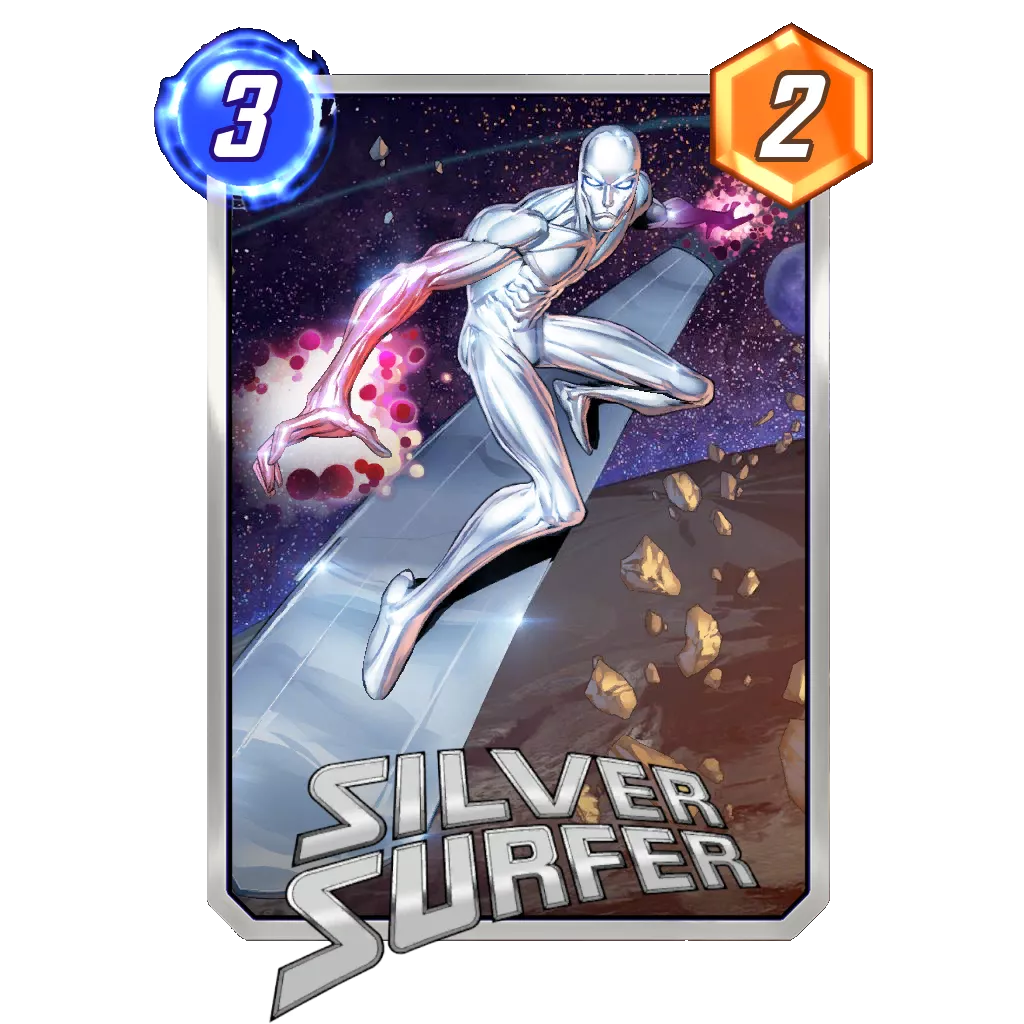










At this point, most people have decided that the deck is looking to play seven 3-cost cards in addition to Silver Surfer, leaving only four slots for the other cards. One of those other cards is Sera to enable our explosive Turn 6. The last three cards should fill the first two turns in the game. So far, Nova alongside two 2-cost cards seems to be the consensus, but these are the most flexible slots in the deck by far.
If these deck building standards seem to represent a large majority of Silver Surfer builds, don’t feel obligated to follow them exactly. In reality, there are only three cards that are absolutely mandatory in the deck:
Among all the 3-cost cards, Brood is the one I can’t imagine not playing in a Silver Surfer deck for the simple fact that it summons three 3-costs cards. This immediately makes Silver Surfer grant a minimum of +6 power.
As for the other cards: they all have their merit, but there are a lot of good 3-cost cards in Marvel Snap. Here is the reasoning behind the ones currently included in the deck.
- Mister Fantastic: A solid, non-committal 3-cost card we can just play on Turn 3 and never regret.
- Storm: Locking a lane we are still able to impact later is quite strong.
- Juggernaut: A good Storm follow up, as well as a disruptive play on Turn 6.
- Polaris: Widely regarded as the best standalone 3-cost card in the game.
- Maximus: Highest raw points total for a 3-cost. We will usually slam it on Turn 6 so we don’t give our opponent extra cards.
- Killmonger: It has solid synergy with Nova, and it’s able to punish a few archetypes through destroying their 1-cost cards.
Similar reasonings can be made for the 2-cost cards currently included. Goose simply synergizes well with a deck looking to play only 3-cost cards, while Jeff the Baby Land Shark is a premium 2-cost card that can be moved to Storm‘s lane or open space for Brood later on.
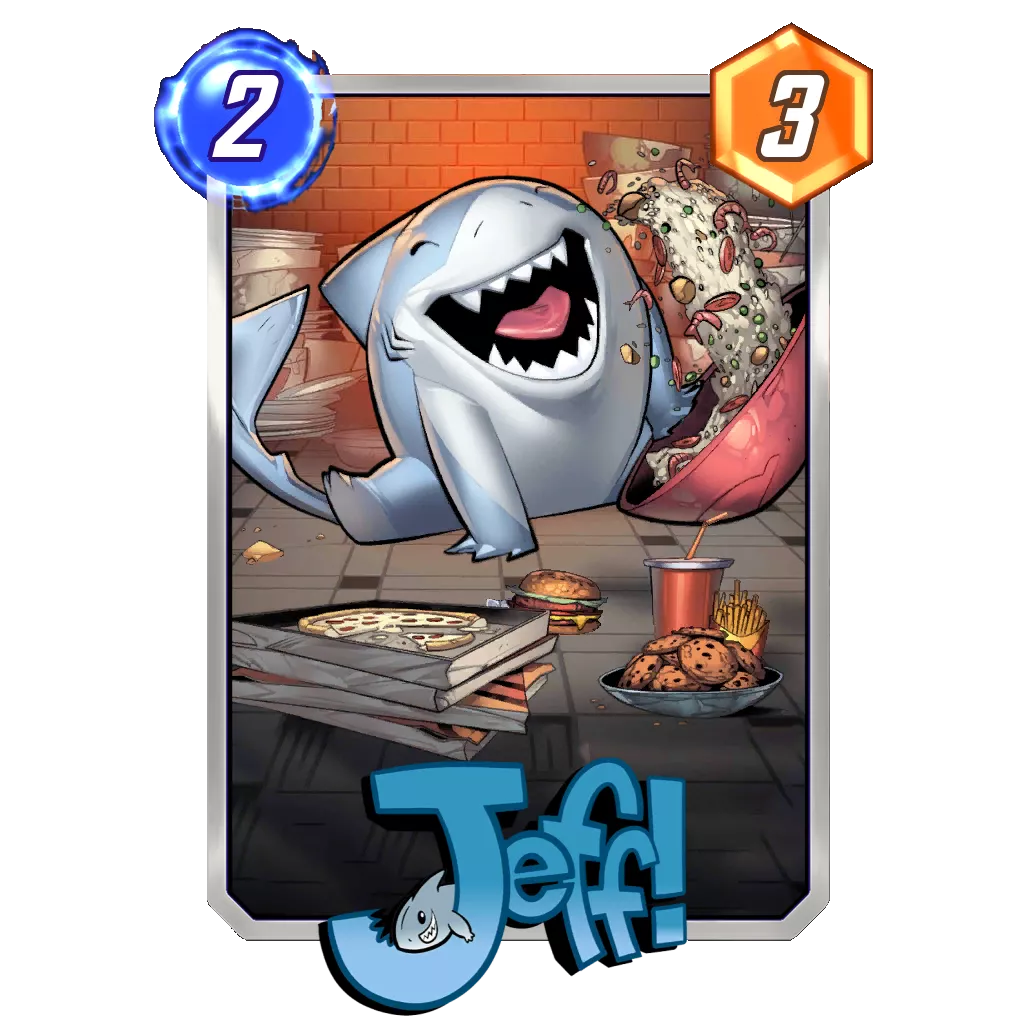







Card Substitutions
Before I propose diverse ways to build around Silver Surfer, here are all the 3-cost cards you might want to consider in the deck.
- Bishop: Solid when played on Turn 3, but it tends to be disappointing later on.
- Cosmo: A solid disruption tool.
- Rogue: Your go-to tech card in order to counter an Ongoing synergy.
- Shadow King: An off-meta pick that can surprise an opponent with cards like Nebula, Angela, or Bishop.
- Thor: Virtually the biggest 3-cost card in the game. It can be very disappointing when we don’t draw Mjölnir or dilute our deck with Sera or Silver Surfer still in it.
- Wolfsbane: The other card able to reach seven power apart from Maximus. The condition is much more limiting, though.
When it comes to the early game cards, they also are fairly flexible. If you remove Killmonger from your deck, several 1-cost cards can become very good considerations.
- Nebula: Synergizes with Storm and is widely regarded as a premium 1-cost card right now.
- Iceman: Solid early card.
- Nightcrawler: Similar logic to Jeff.
The same goes for 2-cost cards, especially if you don’t have Jeff the Baby Land Shark in your collection.
- Scorpion: A solid card to play on Turn 2.
- Angela: Another solid card to play on Turn 2.
- Armor: Can annoy DeathWave and protect our Nebula.
- Scarlet Witch: Locations can be annoying at times, especially Dream Dimension for Sera.
Note that if you decide to remove Killmonger from your deck, you can run more 1-cost cards too. You don’t have to keep the current spread, which is only optimal considering the other cards in the build.
Variations around the archetype
Silver Surfer has seen various builds emerge around it. All of them share the same win condition and similar deck building concepts. However, the synergies included in the deck can vary a lot.
Snap and Retreat

Part of what makes the Silver Surfer archetype one of the finest in Marvel Snap is its ability to have multiple reasons to Snap. First, you can obviously feel quite confident when you have both Silver Surfer and Sera in hand, alongside some cards to play before Turn 5 to fill your energy.
Second, since the deck is able to play various tech cards, you can adapt to your own environment and open some Snap opportunities in certain matchups.
As for Retreating, it is mostly based on the situation when the stakes are about to be raised. If you don’t have any of your key cards in hand or you anticipate your game plan to hit a snag because of a location or your opponent’s archetype, then it’s fine to lose a cube and move on.
Locations
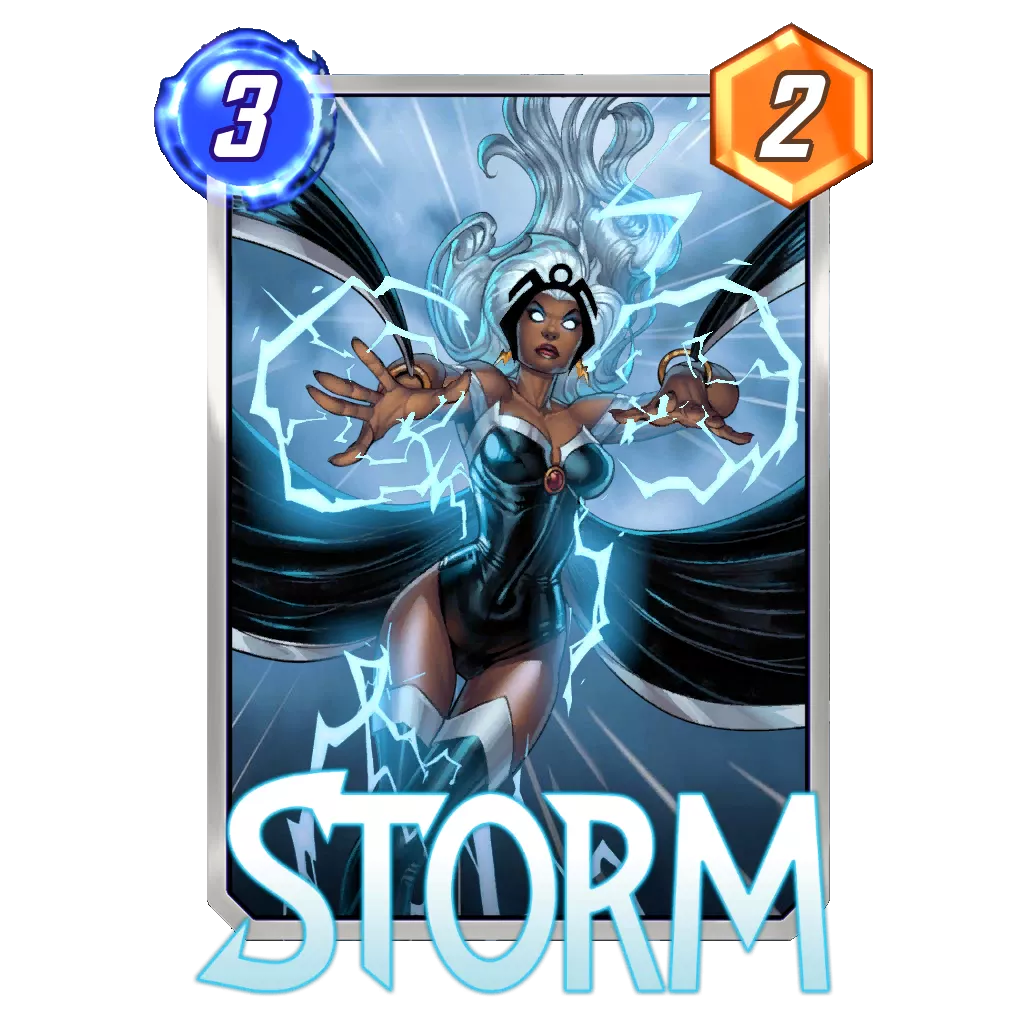
















With Storm in the deck, we are able to change bad locations and limit the deck’s weaknesses in that regard. Still, keep in mind that we need to have cards on a location to be able to have Silver Surfer impact it later on. This means we will usually have to commit at least Turn 3 (for Storm) and Turn 4 in order to make sure this location is ours by game’s end.
Good Locations
- Camp Lehigh: A high roll never hurts with this one. At worst, it’s still a card we can buff with Silver Surfer.
- Kamar-Taj: Doubles our Silver Surfer.
- Kyln: Our ability to buff it later on typically puts us in the lead here.
- The Big House: We basically don’t care about it.
Bad Locations
- Asteroid M: We like to decide where our cards will go.
- Crimson Cosmos: We can’t play here, and that’s annoying.
- Dream Dimension: Sera‘s nemesis.
- Mindscape: Storm this one, please.
- The Sandbar: We can’t play here either, and that’s still annoying.
- Sanctum Sanctorum: A good example of a location we can’t Storm.
- The Nexus and Worldship: Silver Surfer struggles with trying to go all in on a location.
Matchups
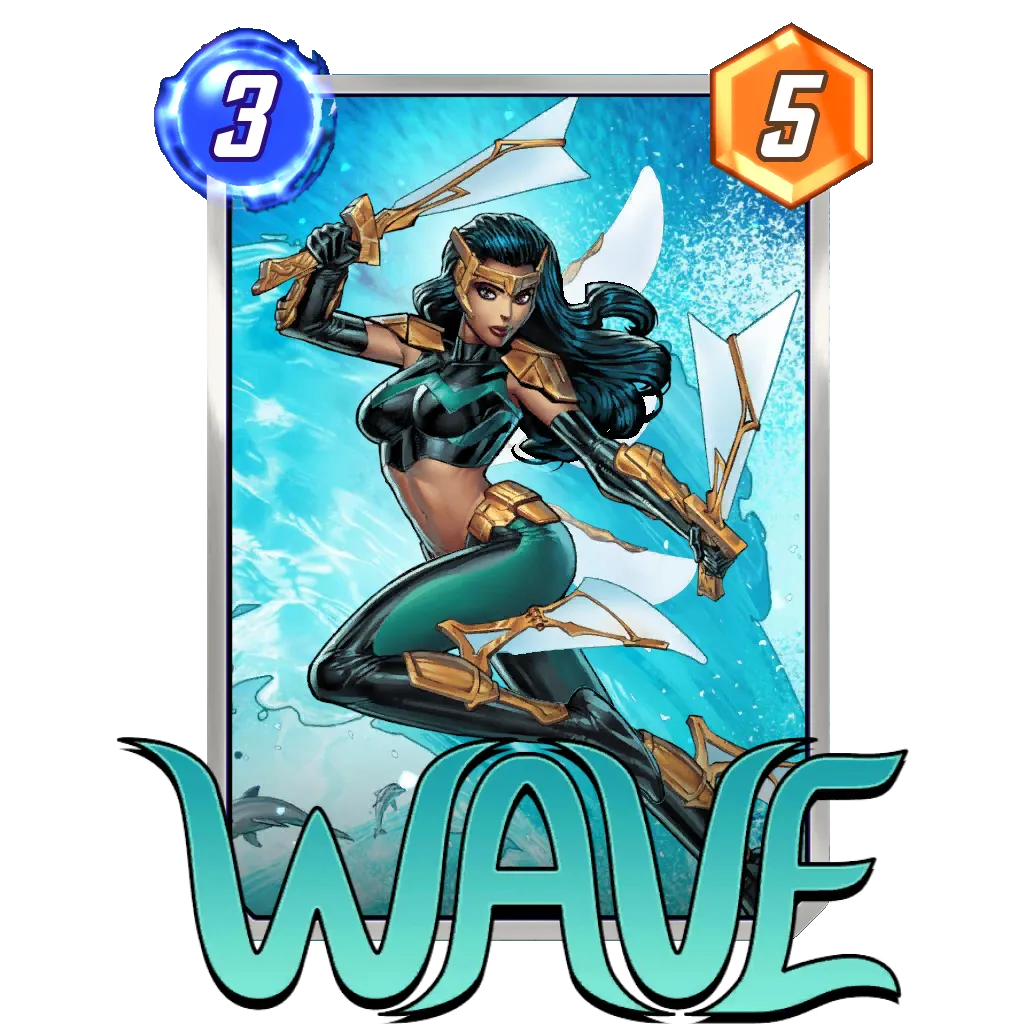






Since this is quite a versatile deck that mostly relies on how it draws (and can quickly adapt through tech cards), Silver Surfer feels capable of fitting into various metagames. Wave is a bit of a problem for the deck, especially if you don’t have Sera to play, as you will be limited to just one card on Turn 6. Sandman is another card that could push you to Retreat early.
Outside of these two cards, it usually comes down to a points contest. While Silver Surfer won’t develop 30 points on a lane, its ability to be annoying through Storm, Juggernaut, and Killmonger will typically limit what the opponent can do as well. As such, I would say most points based decks are not good matchups unless you run the counter card against them.
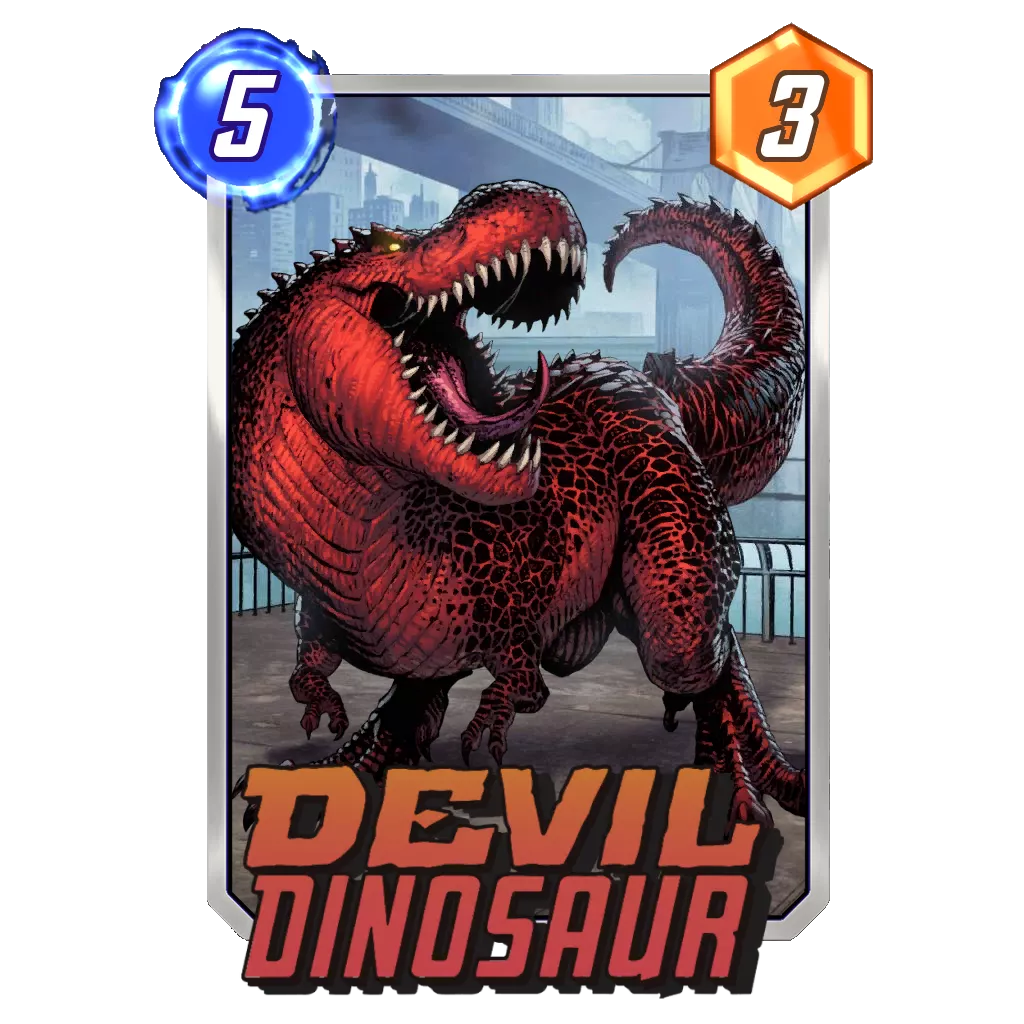








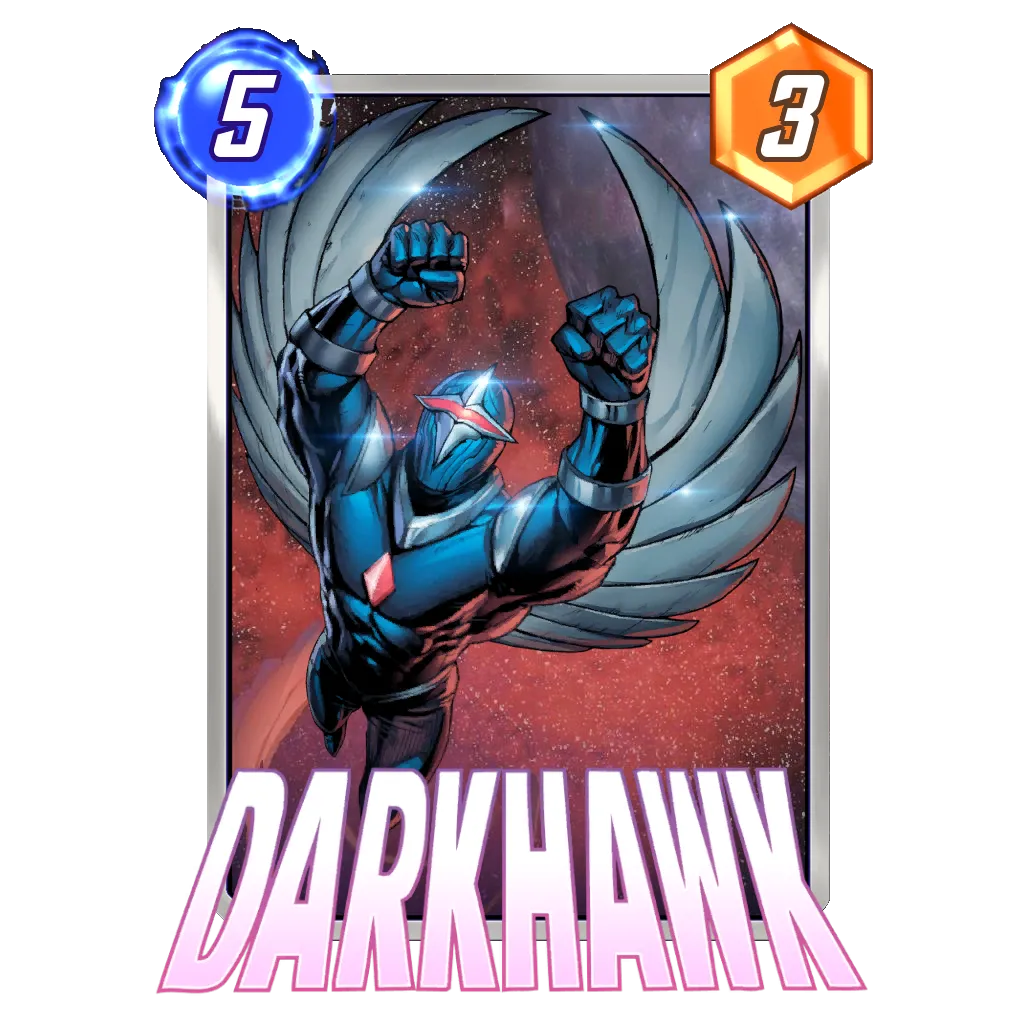










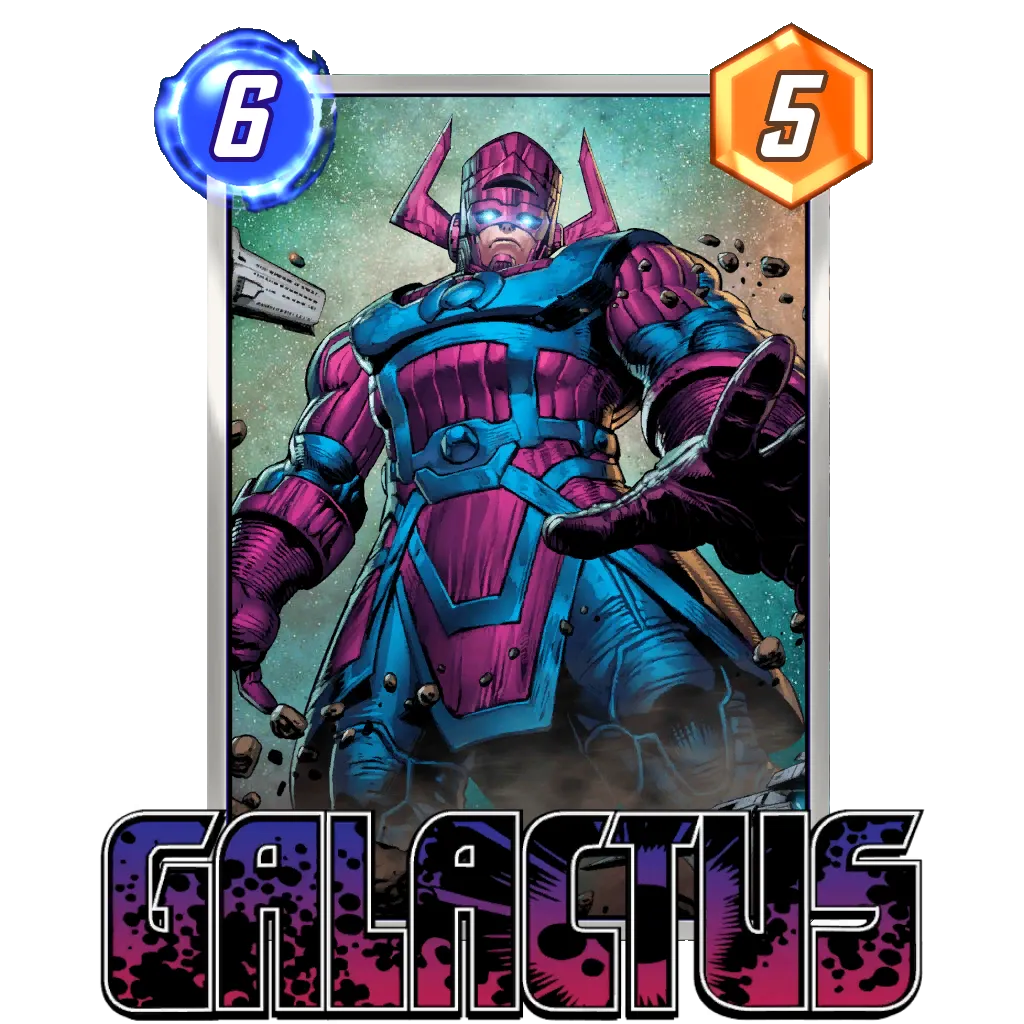











Patriot falls to Rogue, and so do Devil Dinosaur and Darkhawk. Galactus kneels before Cosmo, sometimes even Polaris. DeathWave hates Armor and Cosmo. Discard can be mitigated with Cosmo as well… It is difficult to find a matchup you cannot adapt to.
However, it is also impossible to adapt to all matchups with only 12 cards. Pick a few opponents you are looking to get the majority of your cubes from, and accept the need to play it safe in the other encounters.
Turn by Turn Breakdown

Turn 1
Unless you feel the need to play your 1-cost card, this is a pass turn. If you are playing Nova, it is usually better to hold it until Turn 4 to prevent the opponent from destroying it early or losing the bonus to an Armor.
Turn 2
Play a 2-cost card if you have one. If not, just pass again.
Turn 3
This is where the real fun begins. Ideally, we don’t want to tell our opponent the archetype we are playing just yet, so playing a non-committal 3-cost card is best. In that regard, Storm, Mister Fantastic, and Polaris are all good cards to play on this turn. The choice for which one to play depends on locations and your opponent.
Turn 3 is also the turn where you should start thinking about what is coming next. Do you have Sera in hand? If yes, then what is your Turn 4, and what is your Turn 6? Which locations are you looking to win, and which one will serve as utility?
If you can answer these important questions already, the rest of the match should be quite easy to navigate. It should also be a good time to consider Snapping if you have a clear view on the rest of your match.
Turn 4
Turn 4 is very similar to Turn 3, with the exception of adding your 1-cost card if you have it in hand. If you played Storm last turn, you are usually looking to contest the same location and claim it for good during this turn. If you are still in an open situation, then the questions from Turn 3 remain.
Turn 5
If you have Sera, you will almost always play the card. Without Sera, you have to think how you can set up a good Turn 6 without revealing your whole strategy to your opponent. If none of these are possible, you probably need to go all in and consider Retreating if your opponent raises the stakes.
Turn 6
Apart from reading where you think your opponent will invest their points, there isn’t much to consider at this point. With Sera in play, you should be able to play three cards, opening some flexible play patterns to spread your points.
Most of the time, Silver Surfer‘s location will be your weakest. Unless you want to spread your points evenly, playing Silver Surfer where you already have Sera is a good way to maximize your 3-cost cards on the other locations.
Closing Words
Alongside the Sera Control archetype, Silver Surfer has managed to keep Sera in the discussion as a premium card in Marvel Snap. Both archetypes have managed to adapt and include newly released cards in their decks, all the while staying true to what makes them so special in the first place.
Looking from afar, one might think being able to build solely around 3-cost cards is too limiting for an archetype. Logically, the other archetypes have much more chance to include future releases and grow their potential, while Silver Surfer barely considers any card that isn’t a 3-cost or the best for its energy cost. When you think about it, though, one could also argue there is everything in Marvel Snap already. Over 15 cards are seeing play inside the Silver Surfer archetype when it comes to 3-cost cards alone. In that regard, Silver Surfer already has the necessary surroundings to both perform and adapt to its environment.
If we look at the last two months, it seems like this scenario is proving to be right. Sera Surfer has been a routine top 10 archetype in Marvel Snap, often even cracking the top 5.
I hope this guide was informative and helped you in your understanding of the archetype. For any questions about this piece, feel free to tag me in the Marvel Snap Zone Discord or find me directly on my Twitter page where I share decks and opinions daily.
Good Game Everyone.

⭐ Premium
Enjoy our content? You can Support Marvel Snap Zone and your favorite content creators by subscribing to our Premium community! Get the most of your Marvel Snap experience with the following perks for paid membership:
- No ads: Browse the entire website ad-free, both display and video.
- Exclusive Content: Get instant access to all our Premium articles!
- Meta Reports: Exclusive daily meta reports, such as the Ultimate Card Metrics Report, Top 10 Decks of the Day, Top 30 Cards, and Top Card Pairs tailored for you!
- Team Coaching: Join our free weekly team coaching call sessions on the Discord server. Claim your Premium role and gain access to exclusive channels where you can learn and discuss in real time!
- Premium Dashboard: Get full instant access to the member-only dashboard, the all-in-one page for all your benefits.
- Support: All your contributions get directly reinvested into the website to increase your viewing experience! You get also get a Premium badge and border on your profile.
- Special offer: For a limited time, use coupon code SBYREX4RL1 to get 50% off the Annual plan!
























